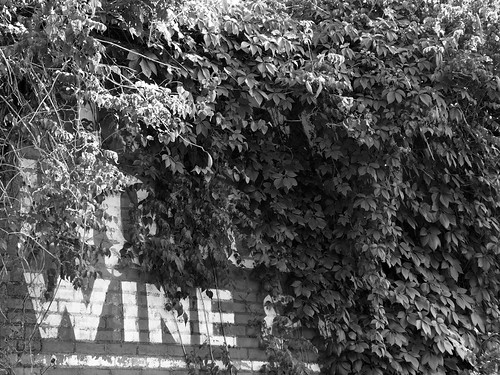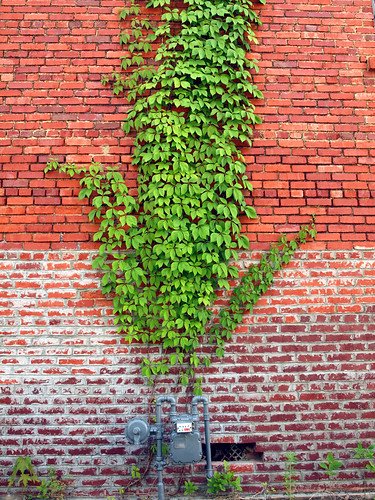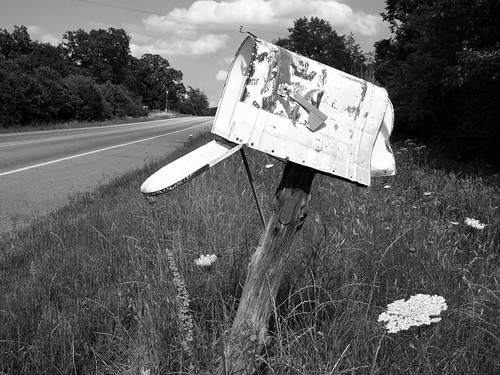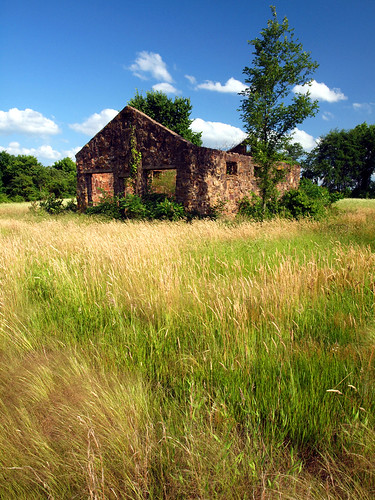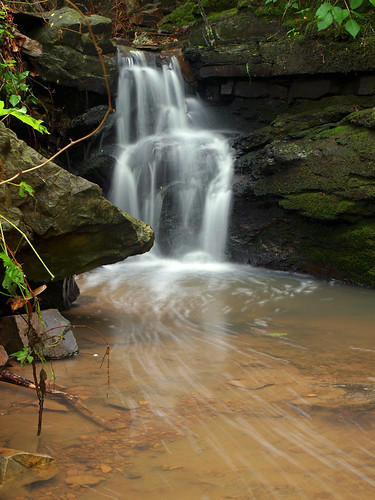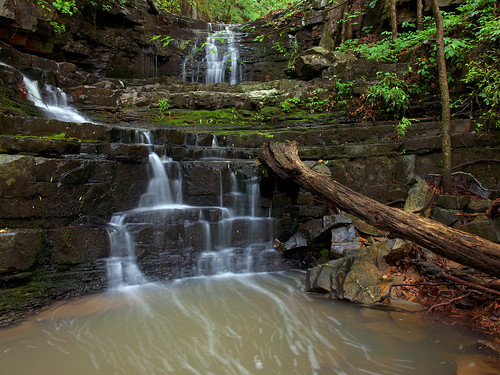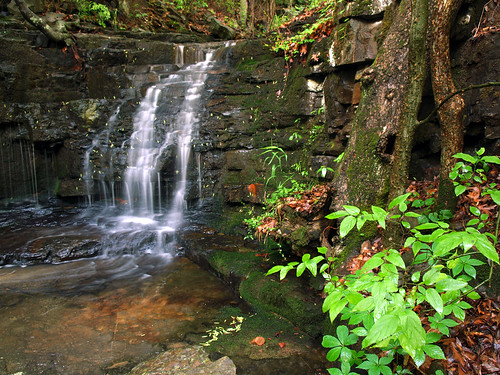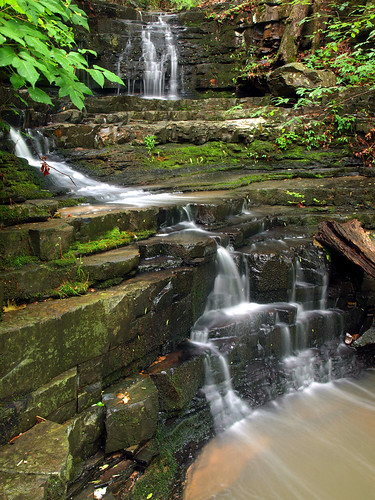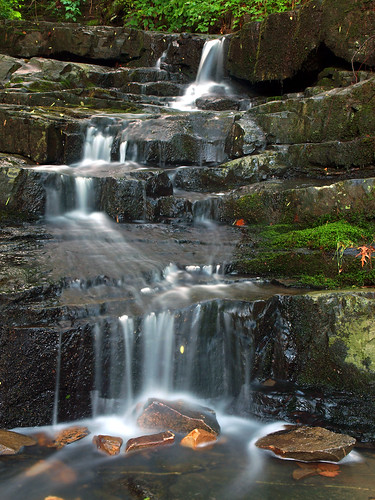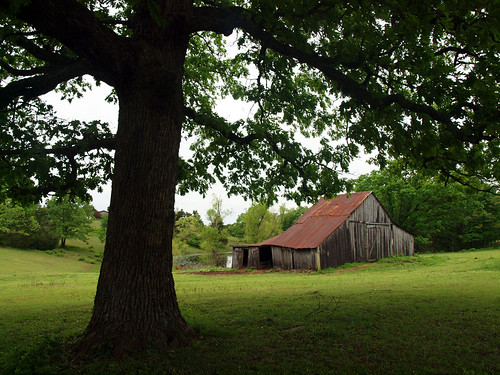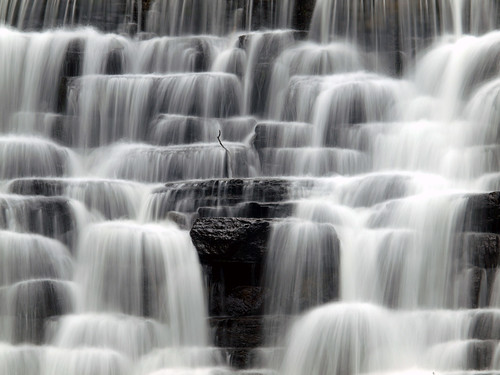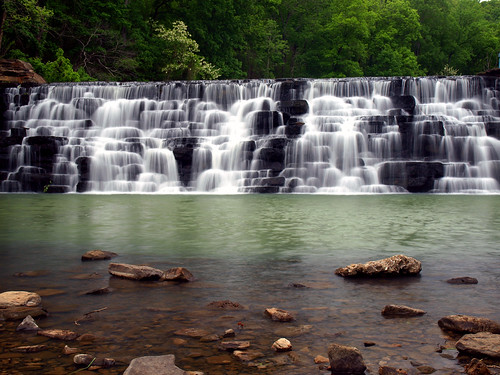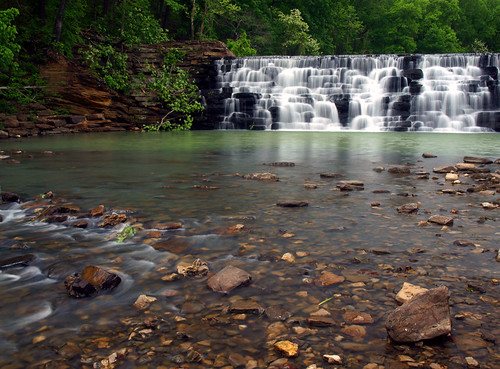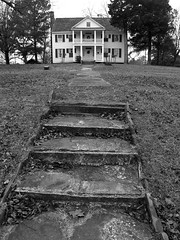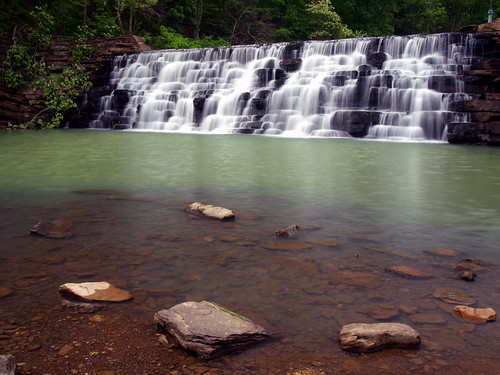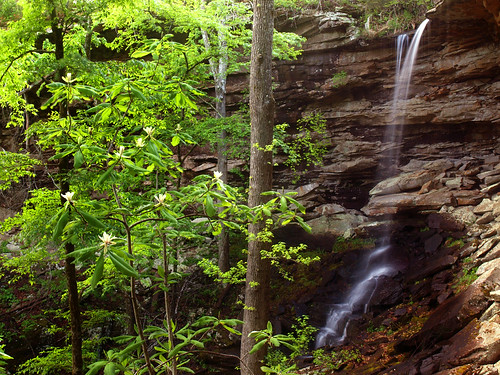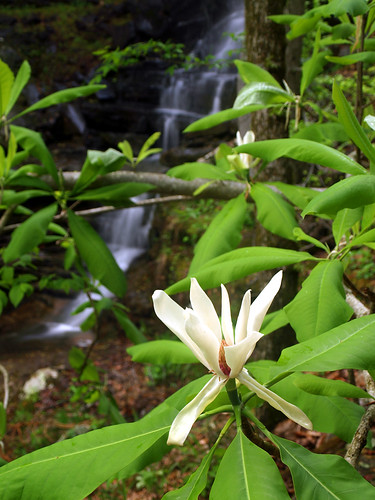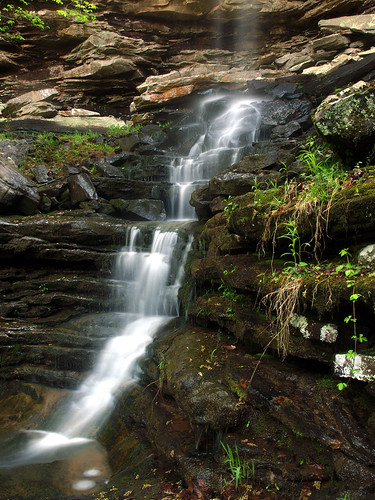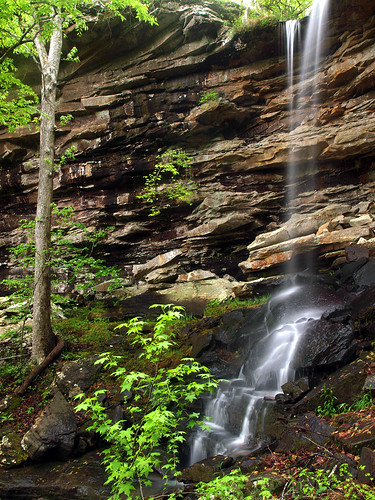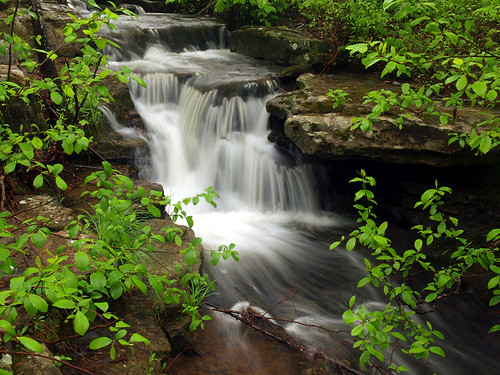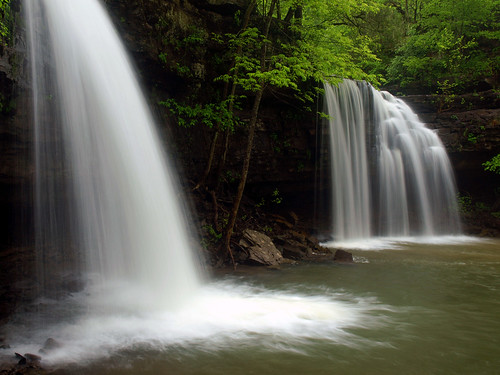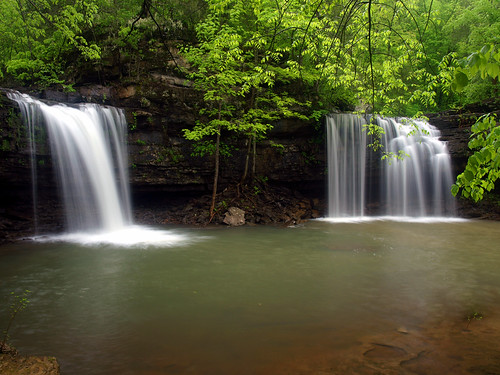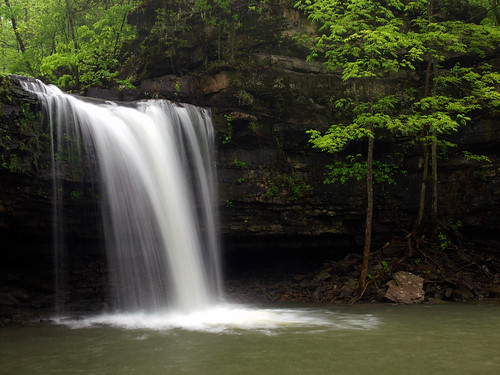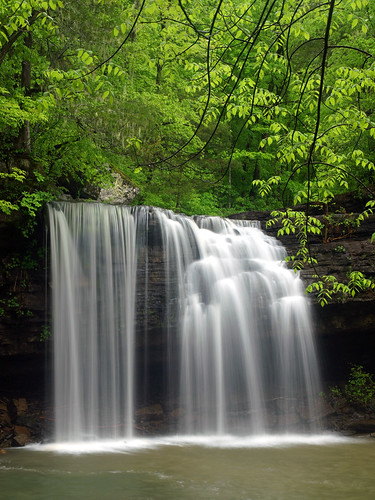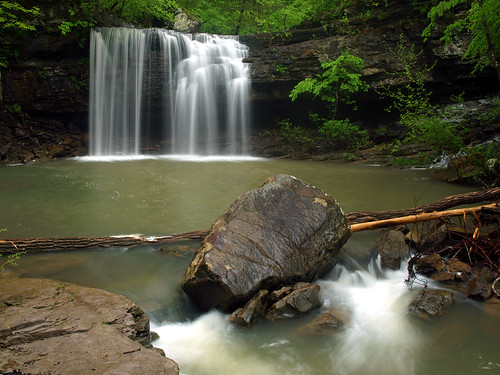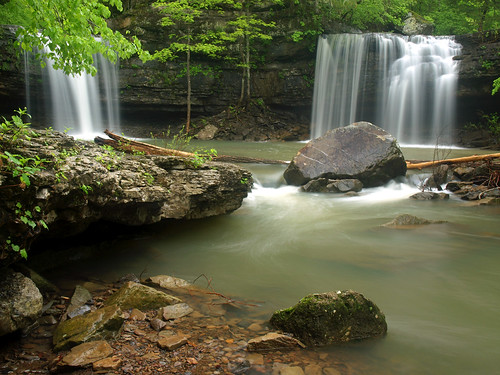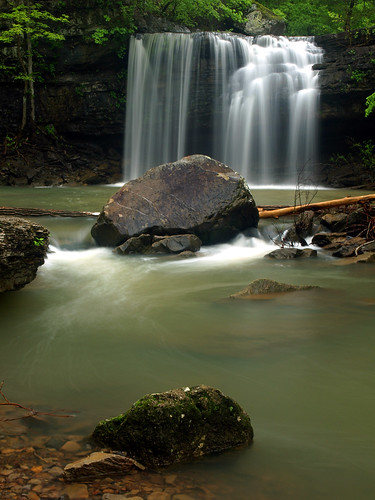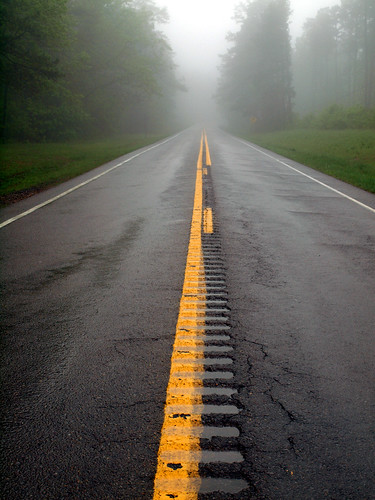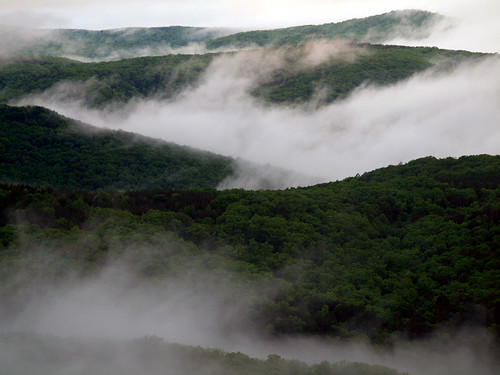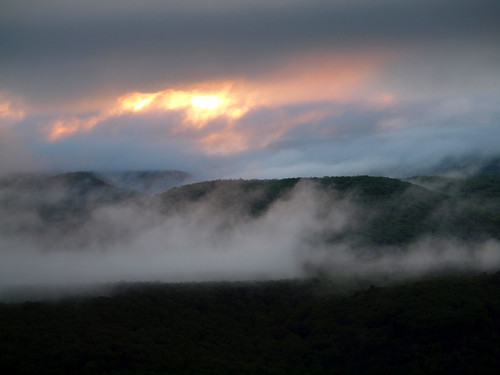As I was driving through Clarksville I decided to try and visit a few waterfalls. It had rained a few days before, and I hoped that some of that water might still be making its way over some waterfalls. I made the relatively short drive towards Haw Creek, located in the Ozark National Forest. This is a neat area, with three great waterfalls all located within a short distance of each other.
I had been wanting to take the new camera on a trip to Pam's Grotto for a few months now, so I headed there first. I went and inspected the creek that flows through Pam's Grotto to see if there was even any water there. A decent amount was flowing, so I decided to make the hike. Although it had been sunny all day, I thought I might get into the grotto when the sun had dropped down enough to put the grotto in shade. I wasn't sure how much daylight I had, so I tried to hurry up the trail as quickly as my out-of-shape legs would take me.
Anyone who has ever hiked the trail to Pam's Grotto knows how foolish that is. The trail starts out by straight up several switchbacks on a steep hill. My attempts to rush up the hill were soon met by an unpleasant burning in my legs. "Why are you doing this?" they seemed to ask. I slowed down my hike, and finally made it to the top of the hill. My journey wasn't helped by the fact that it was only 88 degrees outside. I was doused with sweat when I finally made it to the falls.
And when I did make it to the falls, I found that there really wasn't much water flowing through. I was a few days too late to capture it with much water. But Pam's Grotto is a neat waterfall, which spills over a bluff that is guarded by a massive boulder. I spent some time there taking pictures, but I'm not too happy with the shots since I know it would have looked better with more water flowing over the falls.

I hiked back to the parking area by Haw Creek, where my car was patiently waiting for me. The parking area is right by the creek, which did seem to have a nice amount of water flowing through. You can get some nice views of Haw Creek here, especially of this one boulder that sits right in the middle of the creek. The water flows over a small waterfall, and then rushes past the boulder that sits alone in the middle of the creek.

I got back in the car and made the short drive over to Haw Creek Falls. After having fun crossing the low-water bridge over the creek, I stopped at the campground and got out to explore the waterfall. I wasn't sure if I should even stop for pictures at Haw Creek Falls or not. The setting sun was shining right onto the falls. But I went over there anyways, and saw that the setting sun was cutting through some smoke from a nearby campfire. It looked kinda neat, so I tried to get some pictures before the smoke drifted away and light faded.
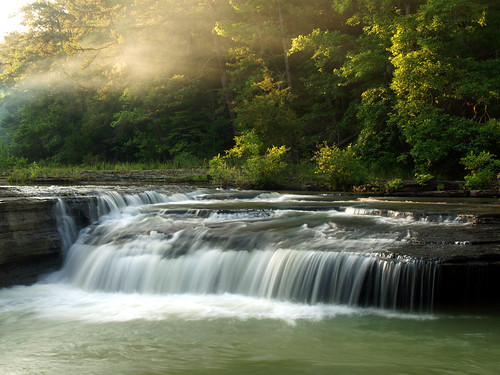
The smoke actually cleared out after a few seconds. But this is a shot of the falls, with some lingering smoke in the distance.
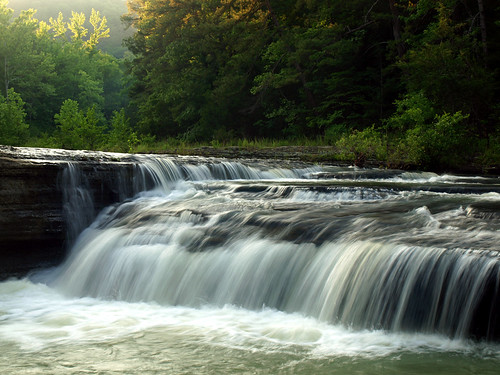
Even if it isn't the tallest waterfall, I like Haw Creek Falls. It's a neat spot, where the creek tumbles over a rock shelf.
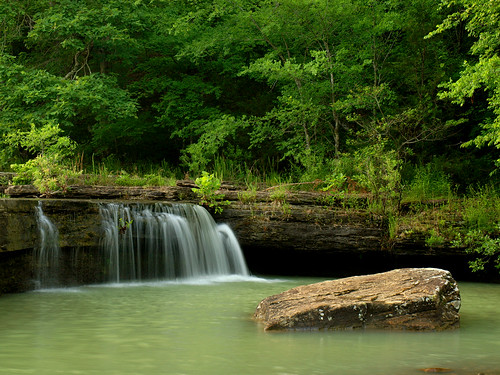
I headed onto the rock shelf and got some pictures looking down on the falls. The distant trees were catching the light from the setting sun, which turned them into a nice shade of gold.
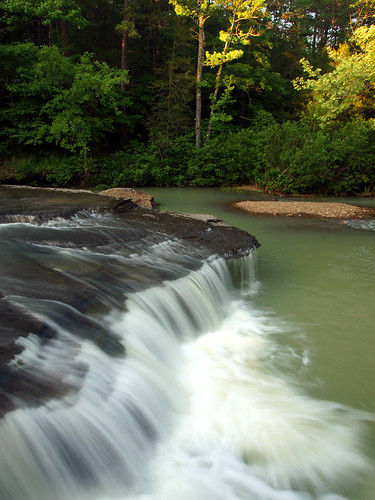
But now we are heading into June and the summer, which means hot weather and little rain. This might be the last waterfalls pictures for awhile, sadly. Let's all hope for some dreary rainy days...

